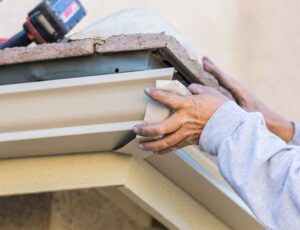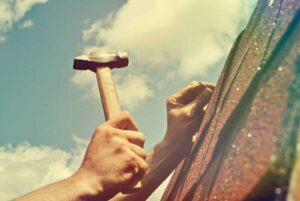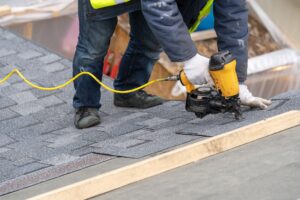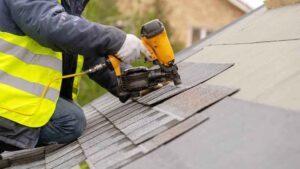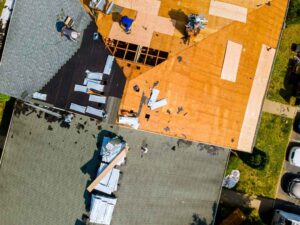If you live in the Midwest, you already know: your roof works overtime. Between hail, snow, wind, and the kind of summer heat that makes asphalt shingles curl, roofing here isn’t just about looks — it’s about lasting performance.
We hear the same questions over and over:
“What’s the best roofing material for my home?”
“Is metal really worth it?”
“Should I go with something more permanent this time?”
At Cornett Roofing Systems, we’ve been answering those questions — and installing roofs that handle the Midwest — for over 30 years. If you’re looking to make a smart investment in your home or commercial building, this guide is for you.
Here’s what we’ll cover:
- How Midwest weather affects your roofing decisions
- A breakdown of the most common (and not-so-common) roofing materials
- What to consider before choosing your next roof
- Why permanent roofing might save you money in the long run
Let’s find out what roofing material actually makes sense for your property.
Need help now? Schedule a free inspection.
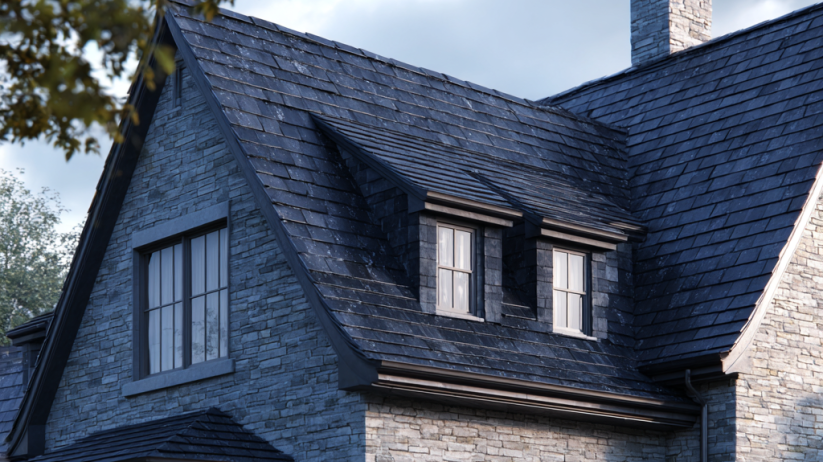
Midwest Weather Is Tough — Your Roof Should Be Tougher
We don’t have to tell you that Midwest weather is unpredictable. One week it’s 90 and humid, the next it’s hailing golf balls and blowing shingles into your neighbor’s yard. That’s why the best roofing material isn’t just what looks good — it’s what performs well in all four seasons.
If you’re in Indiana or anywhere else in the Midwest, here’s what your roof has to deal with:
- Hail that can split, dent, or destroy most roofing materials
- Tornado-force winds that pull shingles off like stickers
- Heavy snow and ice that strain your roof deck
- UV exposure that breaks down lower-grade asphalt faster than you’d expect
So when we say “best roofing material,” we’re not talking about what’s trendy or cheap. We’re talking about what works.
Know This Before You Replace Your Roof
Choosing a roofing material is a big decision, and like any major upgrade, it comes down to more than cost. Here are a few things to keep in mind before you commit:
| What to Think About | Why It Matters |
| Budget | Upfront vs. long-term costs can be drastically different |
| Roof Pitch | Not every material works with steep or flat roofs |
| HOA or Code Rules | Some areas restrict certain types (like metal or slate) |
| Energy Efficiency | A reflective roof can shave money off your cooling bills |
| How Long You’ll Stay | If this is your forever home, invest in something that lasts |
| Warranties | Don’t skip this — a good roof should come with a good guarantee |
If you’re unsure how these apply to your home, give us a call. We’ll walk your roof, take a look, and give you a straight answer — no pressure.
Comparing Roofing Materials: What’s Worth It in the Midwest?
There’s a reason this topic gets so many opinions. There are a lot of different types of roofing materials, and each one has its place — but only a few really hold up over time in the Midwest.
Let’s break it down.
Asphalt Shingles
The “default” option — but it wears out fast
- Lifespan: 15–25 years
- Cost: $
- Upside: Inexpensive, easy to install
- Downside: Prone to hail damage, fades fast, needs replacing sooner than you think
- Good for: Homes going on the market soon or temporary roofing needs
Asphalt’s the go-to for many builders, but if you’re staying in your home for the long haul, you’ll be replacing it again — maybe more than once.
Standing Seam Metal Roofing
Our pick for best all-around Midwest performance
- Lifespan: 40–70 years
- Cost: $$$
- Upside: Reflects heat, handles hail and wind like a champ, low maintenance
- Downside: Higher upfront cost
- Good for: Long-term homeowners and commercial properties
We install our own metal panels in-house, which means better quality control and fewer people between you and your warranty. Metal roofing is hands-down one of the best roofing materials for Midwest homes.
Synthetic Slate & Tile
The look of luxury — without the weight or hassle
- Lifespan: 50+ years
- Cost: $$$
- Upside: Hail-resistant, great curb appeal, doesn’t crack like natural slate
- Downside: Still a premium price tag
- Good for: High-end homes, historical restorations, long-term investment
This is what we call “permanent roofing.” If you’re tired of tearing off shingles every 20 years, this is the kind of product that makes sense.
Natural Slate or Clay Tile
Built to last forever — if your structure can handle it
- Lifespan: 75–100+ years
- Cost: $$$$
- Upside: Timeless, elegant, extremely durable
- Downside: Heavy, expensive to install, may need extra support
- Good for: Custom homes, luxury builds, historic properties
These are legacy roofs. You won’t be replacing it in your lifetime — and probably neither will the next owner.
Cedar Shake
Traditional — but not storm-friendly
- Lifespan: 25–35 years (with maintenance)
- Cost: $$$
- Upside: Classic look
- Downside: Flammable, high maintenance, not great in hail zones
- Good for: Homeowners focused on aesthetics, not performance
Flat Roofing (TPO, EPDM, PVC)
Solid for commercial and modern residential
- Lifespan: 20–30 years
- Cost: $$–$$$
- Upside: Great for low-slope buildings, energy-efficient
- Downside: Leaks if not installed correctly
- Good for: Flat roofs, offices, modern homes
Why We Recommend Permanent Roofing for the Midwest
Here’s the bottom line: if you live in the Midwest and plan to be in your home or building for more than 10 years, permanent roofing materials like metal, synthetic slate, and metal tile give you the best long-term value.
At Cornett Roofing, we build systems designed to last 50+ years with minimal upkeep. We’re not here to sell you a short-term fix. We’re here to solve your roofing problem for good.
Why Permanent Roofing Makes Sense
- Durability: Rated to handle hail, wind, and heavy snow
- Savings: Reflects heat, reduces energy bills
- Less Waste: Fewer replacements = less landfill junk
- Long-Term Warranty: Up to 50 years on materials, and up to 10 years on our workmanship
You’ll pay more upfront — but you’ll only do it once.
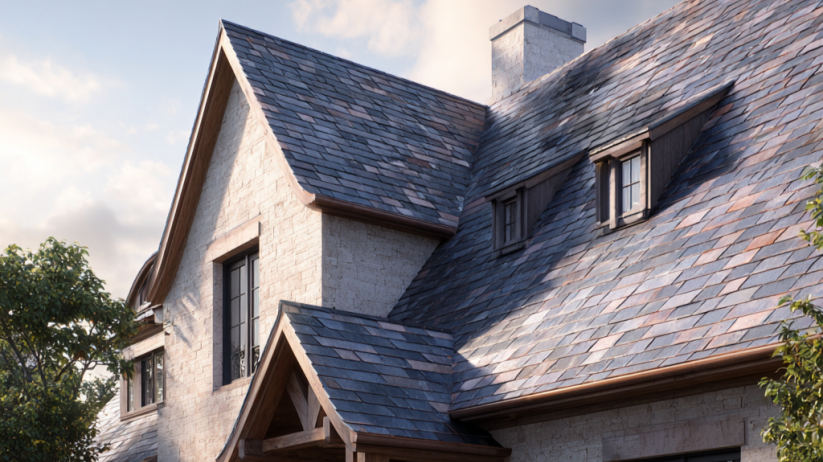
Midwest Roofing FAQs: What Homeowners Want to Know
What is the best roofing material for hail in the Midwest?
The best roofing material for hail in the Midwest is Class 4 impact-rated metal or synthetic slate, both of which are designed to resist cracking and denting.
How long does a roof last in Indiana?
In Indiana, asphalt shingles usually last 20–25 years, but metal and slate roofs can last 50 years or more, especially with professional installation.
Is metal roofing loud when it rains?
Metal roofing isn’t loud during storms when installed with proper underlayment. You won’t hear more noise than a standard shingle roof.
Can roofs be installed in winter?
Yes, we install roofs year-round. Our crew uses the right tools and materials to handle cold-weather installations without cutting corners.
Do you offer financing?
Yes. We offer flexible financing options to make permanent roofing more accessible for homeowners and business owners.
What roofing materials does Cornett Roofing install?
We install asphalt shingles, standing seam metal, synthetic slate, natural slate, metal tile, cedar, and flat roof systems like TPO and EPDM.
How do I know what roofing material is right for me?
The best roofing material for your property depends on your goals, location, and budget. We offer free inspections to help you make the right call.
Final Word: Choose the Roof That Works for the Long Haul
There’s no one-size-fits-all answer to “What’s the best roofing material?” But if you’re in the Midwest, and you’re looking for something that can handle the weather and stand the test of time, metal and synthetic roofing systems are hard to beat.
At Cornett Roofing Systems, we’ve been building permanent roofing solutions since 1991. We’re local. We manufacture many of our own products. And we stand behind every roof we install — because we live here too.
Schedule your free roof inspection and let’s find the right roofing material for your home or business — one that works today, tomorrow, and for decades to come.

